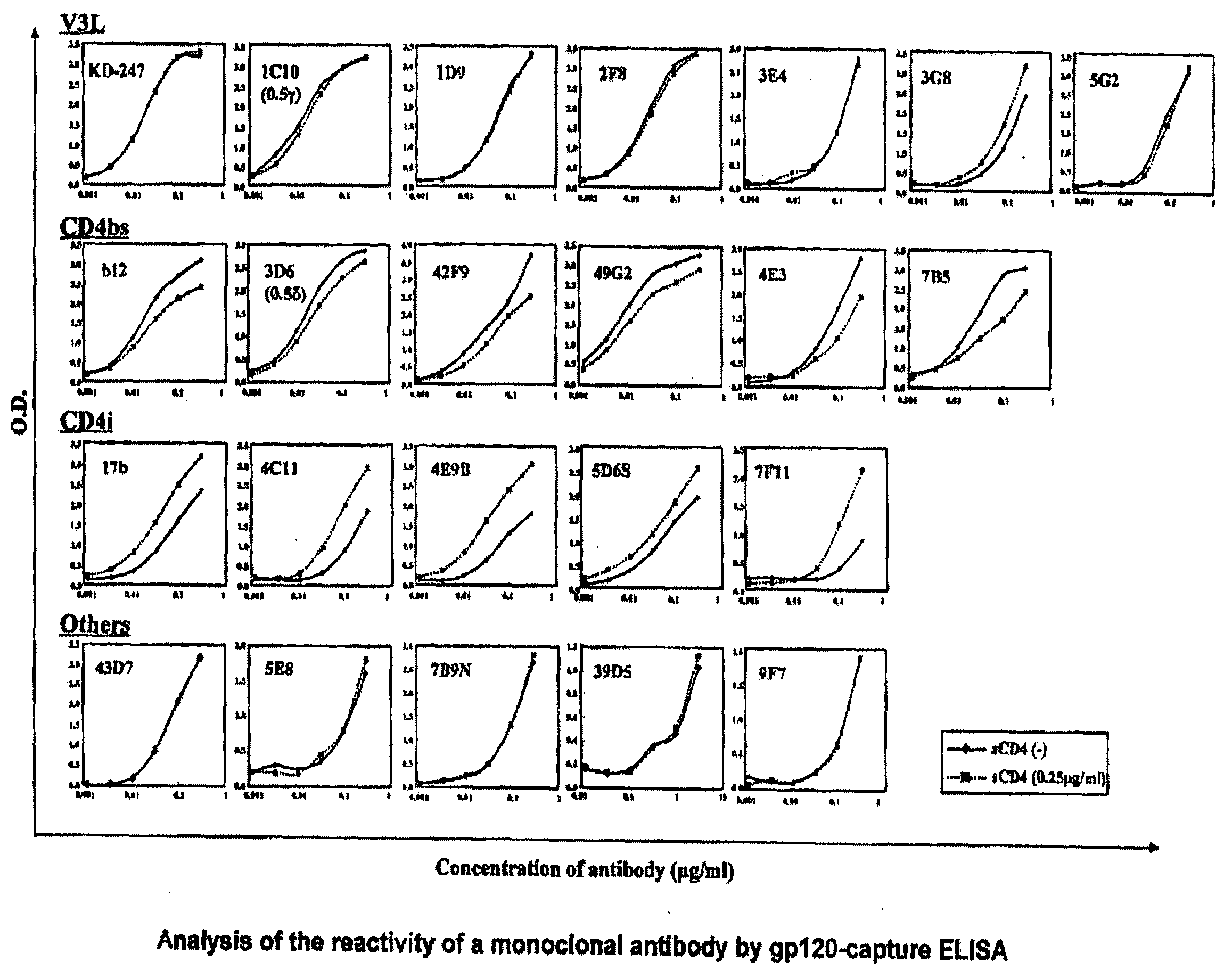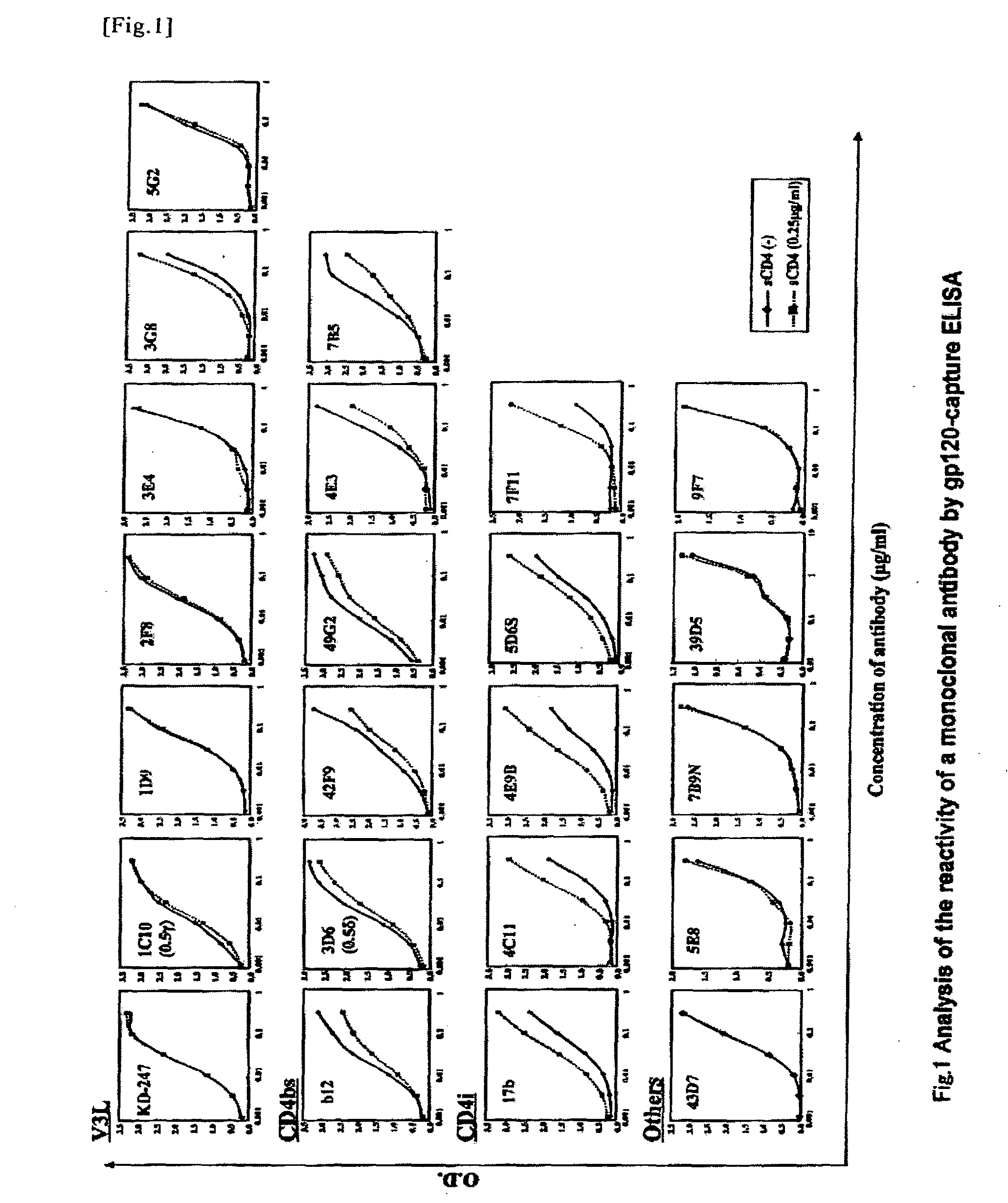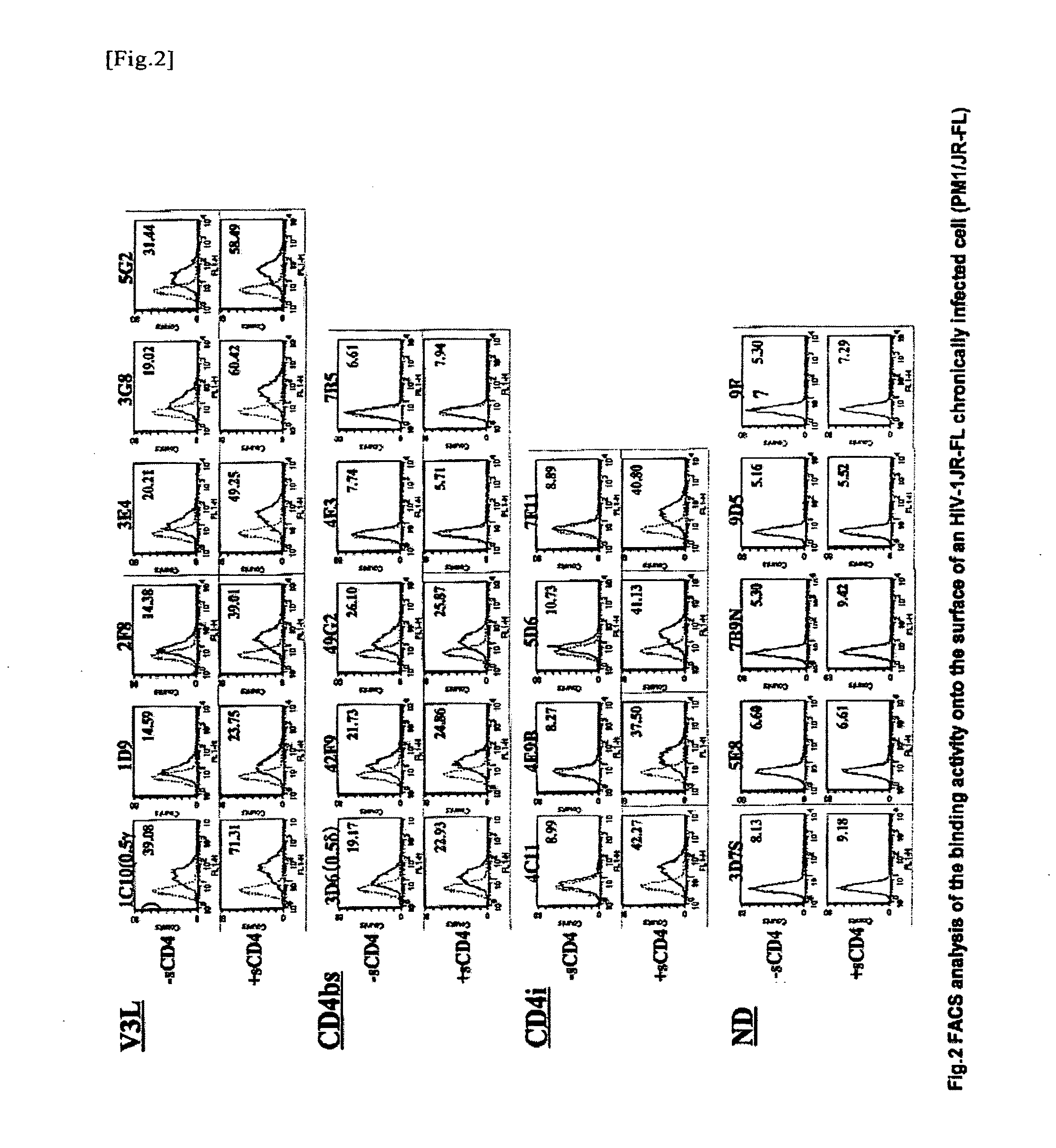Anti-hiv monoclonal antibody
- Summary
- Abstract
- Description
- Claims
- Application Information
AI Technical Summary
Benefits of technology
Problems solved by technology
Method used
Image
Examples
example 1
Production of Neutralizing Monoclonal Antibody
[0038]Peripheral blood B cells were infected with EB virus, and a cloning operation was then repeatedly carried out, so as to separate antibody-producing cells having an anti-gp120 activity. This cell production method was basically created by modifying a method that we had applied to a human T-cell leukemia virus type 1 (HTLV-1) infection case (Matsushita S., et al., Proc. Natl. Acad. Sci. (USA) 83: 3672-3676, 1986). Peripheral blood was collected from a long-term nonprogressive HIV-infected patient who had a neutralizing activity on a wide range of viral strains, and it was placed in a heparin-containing blood collecting tube (20 to 30 ml). Thereafter, a peripheral blood mononuclear cell (PBMC) fraction was isolated by a density-gradient centrifugation method using Ficoll-Hypaque. From the obtained PBMC, CD8 positive cells were depleted according to immunomagnetic separation using Dynabeads. Specifically, PBMC was incubated with Dynabe...
example 2
gp120-Capture ELISA
[0039]The “gp120-capture ELISA” was applied to screen for the antibody-producing cells having an anti-gp120 activity (J. P. Moore et al., J. Virol. 67, pp. 6136-6151, 1993). Specifically, on the day before the experiment, 50 μl of anti-gp120-05 sheep antibody (D7324; Aalto Bioreagents, Dublin, Ireland) whose concentration had been adjusted to be 13.3 μg / ml with the addition of a CC buffer (Carbonate-bicarbonate buffer; pH 9.6) was added to a 96-well polypropyren plate (Falcon), and it was then left at rest at 4° C. overnight. Thereafter, a supernatant was removed, and 175 μl of a blocking buffer (2% bovine serum albumin; BSA, 0.1% Azide, PBS, pH 7.2) was added to the residue. The obtained mixture was left at rest at room temperature for 30 minutes. Thereafter, the well was washed with an ELISA wash buffer (0.15% Tween20, PBS, pH 7.2) three times, and 50 μl each of monomeric gp120 (gp120-SF2; Austral Biologicals, San Ramon, Calif.) was then added thereto. The obtai...
example 3
Classification of Monoclonal Antibodies
[0040]Antibodies reacting with gp120 are classified into the following 4 types, depending on the types of reactive epitopes. Specifically, the 4 types are a CD4-binding site (CD4bs), a CD4-induced epitope (CD41), a third variable loop (V3loop; V3L), and those that cannot be classified into the aforementioned groups (other epitopes). Whether or not an antibody binds to V3L is determined by ELISA using a synthetic peptide having the amino acid sequence of V3L (V3-peptide ELISA). In this experiment, we used the V3 sequence from JR-FL strain (NNT20; NNTRISIHIGPGRAFVTIGK), which was the closest to the V3 sequence of the virus of a case from which the antibody was derived. On the day before the experiment, 100 μl of a peptide (NNT20) diluted in PBS at a concentration of 5 μg / ml was added to each well of a 96-well polypropyren plate, and it was then left at 4° C. overnight. After washing, 175 μl of a blocking buffer was added to each well, and was inc...
PUM
 Login to View More
Login to View More Abstract
Description
Claims
Application Information
 Login to View More
Login to View More - R&D
- Intellectual Property
- Life Sciences
- Materials
- Tech Scout
- Unparalleled Data Quality
- Higher Quality Content
- 60% Fewer Hallucinations
Browse by: Latest US Patents, China's latest patents, Technical Efficacy Thesaurus, Application Domain, Technology Topic, Popular Technical Reports.
© 2025 PatSnap. All rights reserved.Legal|Privacy policy|Modern Slavery Act Transparency Statement|Sitemap|About US| Contact US: help@patsnap.com



